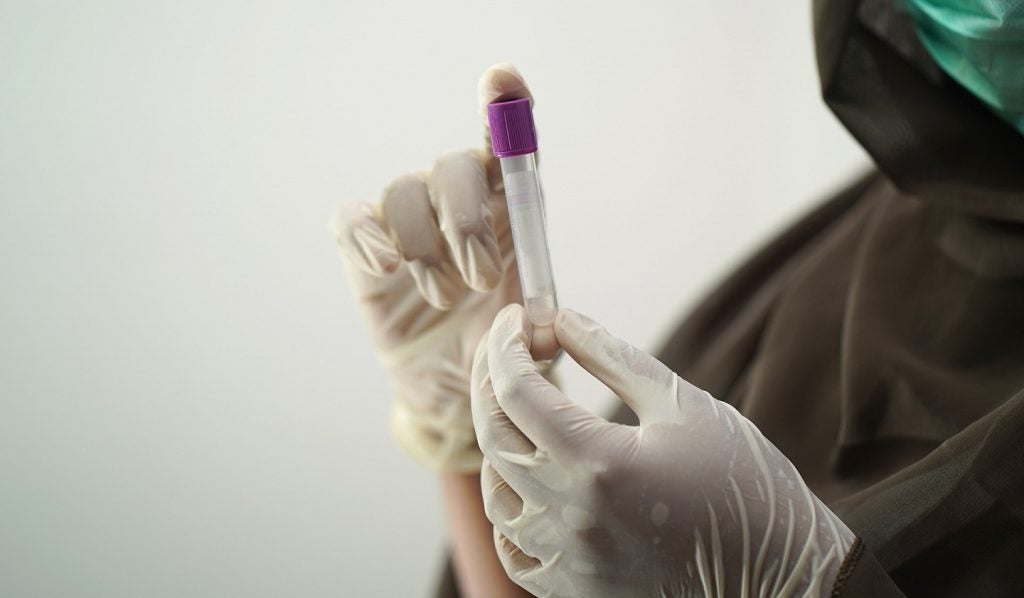
Nosocomial infections are infections that result from treatment in hospital or a healthcare centre, but are secondary to a patient's original condition. Infections are considered nosocomial if they appear 48 hours or more after hospital admission or within 30 days of discharge. This type of infection is also known as a hospital-acquired infection. The most common nosocomial infections are of the urinary tract and blood stream, and they include various pneumonias. Nososcomial infections have become a major cost burden on healthcare systems.
The severity of the nosocomial infection problem can be gauged from the fact that the US, which has one of the world's most advanced healthcare systems, has two million new nosocomial infection cases a year, resulting in 90,000 deaths, at a cost of $4.5–5.7bn a year. Some 70% of nosocomial infections are caused by antibiotic-resistant organisms, making them difficult and expensive to treat.
Nosocomial infections are widespread and are having an increasing impact in terms of morbidity and mortality. In future they will have an increasingly significant negative human and economic impact. Nosocomial infections are a major cause of preventable deaths and diseases in developing countries.
The most common pathogens responsible for nosocomial infections are bacteria, viruses and fungi. Some of the most common species are Enterococcus spp, Escherichia Coli, Staphylococcus Aureus and Pseudomonas spp. The most common sites of nosocomial infections are the urinary tract and the blood stream. Nosocomial infections also commonly cause pneumonia.
Urinary tract infections (UTIs) are the most common nosocomial infections, and the majority of cases can be attributed to the use of a urinary catheter. However, UTI infections have the lowest mortality of all the nosocomial infections, and they are the least expensive to treat.
See Also:
Blood stream infections have a high mortality (around 15–25%), and the majority of cases can be attributed to the use of catheters.
How well do you really know your competitors?
Access the most comprehensive Company Profiles on the market, powered by GlobalData. Save hours of research. Gain competitive edge.

Thank you!
Your download email will arrive shortly
Not ready to buy yet? Download a free sample
We are confident about the unique quality of our Company Profiles. However, we want you to make the most beneficial decision for your business, so we offer a free sample that you can download by submitting the below form
By GlobalDataPneumonia infections are mostly associated with ventilators. It is estimated that each day 1–3% of intubations result in infection. Clearly invasive devices are more important than underlying diseases in determining susceptibility to nosocomial infections.
DETECTION METHODS
The most commonly used techniques for detecting nosocomial infections are in vitro and in vivo diagnostics, and physical examination. In vitro diagnostics and recent advances in molecular diagnostics can help reduce the burden of nosocomial infections. In vitro diagnostic techniques can play a crucial role in infection control. They can also help reduce the prevalence of disease and its associated costs.
A rapid, highly sensitive and accurate diagnosis can quickly lead to the isolation of patients, which is crucial in checking the further spread of infection. Quick diagnosis also helps the physician modify the treatment regimen, improving clinical and financial outcomes.
Various methods are used to detect infection using in vitro diagnostics:
- Haematology tests. Elevated levels of white blood count indicate an infection, but they do not reveal the organism causing it.
- Culture tests. Culture tests are considered to be more sensitive, and they can accurately identify the organism present, whether it is a bacterial or fungal infection. The pitfalls with this test are that it is time consuming and, if done manually, prone to error.
- Molecular diagnostic tests. In theory molecular diagnostic tests are the most rapid, sensitive and accurate test, and any pathogen can be tested.
The need to detect micro-organisms that are slow or difficult to grow, or that are present in only small numbers, gave rise to the use of molecular diagnostics to detect nosocomial infections. Nucleic acid amplification techniques, such as polymerase chain reaction, for example, can detect DNA or RNA that is specific to certain micro-organisms. They do not rely on either the recovery of the pathogen or an immune response – which takes time – in the infected patient.
The increasing commercial interest in infectious disease diagnostics has given rise to nucleic acid amplification techniques, which are gaining widespread acceptance and have displaced more conventional testing in some areas.
Genetic characterisation techniques are increasingly used to determine the relatedness of micro-organisms in the clinical setting. These techniques can be used to establish routes or sources of infection in outbreaks of disease, and are powerful epidemiological tools in large-scale clinical investigations.
Recently, there has been a move towards pathogen characterisation techniques based on direct nucleotide sequencing (single nucleotide polymorphism analysis, multi-locus sequence typing, for example). The emergence of antibiotic-resistant organisms further reinforces the need for molecular diagnostic techniques.
Molecular techniques for establishing the presence or absence of clonality are effective in tracking the spread of nosocomial infections and streamlining an infection control programme.
A comprehensive infection control programme employs active surveillance by infection control practitioners and microbiology laboratories to identify clusters of infections with a common microbial phenotype. The isolates are characterised in the laboratory using molecular diagnostic techniques to confirm or refute clonality. Based on available epidemiologic and molecular data, the hospital epidemiologist then develops an intervention strategy. This can shorten or prevent an epidemic and
reduce the number and cost of nosocomial infections.
Multiplexing techniques are currently being developed to tackle nosocomial infections. Once multiplexing technology for detecting infections has been commercialised, it will be a real benefit. A typical hospital will contain many pathogens, and simultaneous detection of these is only possible using multiplexing technology, which will also help reduce the diagnosis time and costs.
Lately the field of molecular diagnostics has taken a leap forward in terms of offering miniaturised, simple and affordable testing platforms.
Molecular diagnostic technology can give physicians an accurate diagnostic picture where conventional means can't. Today the technology can detect infections in lower respiratory tract and central nervous system infections.
Molecular tests are being implemented to screen for and monitor hospital-acquired infections such as methicillin-resistant Staphylococcus aureus (MRSA) vancomycin resistant enterococcus and Clostridium difficile.
PROFOUND IMPACT
Nosocomial infections lead to functional disability, emotional stress and trauma for patients and their relatives, and reduced their quality of life. The impact of the disease is more severe in resource-poor countries. Nosocomial infections tend to increase the cost of healthcare in countries that can least afford these costs by increasing the time patients spend in hospital and requiring the use of expensive medication.
The problem of nosocomial infections is not taken seriously enough in developing countries, and there are often no set protocols for infection control in hospitals. At the same time hygiene maintenance is often confused with general sanitation and hospital cleanliness. The cost of proper infection control can be prohibitive in developing countries.
The problem needs to be taken more seriously in Africa and Asia, because these continents have the highest incidence of communicable and infectious diseases such as HIV and tuberculosis. The population in general tends to have a depressed immunity, making them more susceptible to nosocomial infections.
INFECTION PREVENTION
Nosocomial infections can be prevented using simple, relatively inexpensive strategies, such as reliable screening and diagnosis, hand washing, infection management systems, the use of non-invasive surgery were possible and improved safety awareness. Although some nosocomial infections are inevitable, evidence suggests that most are preventable and avoidable, while the cost for curing the disease is significantly higher than the expense involved in creating a preventive framework. This means
that nosocomial infection prevention is both important and cost-effective.






